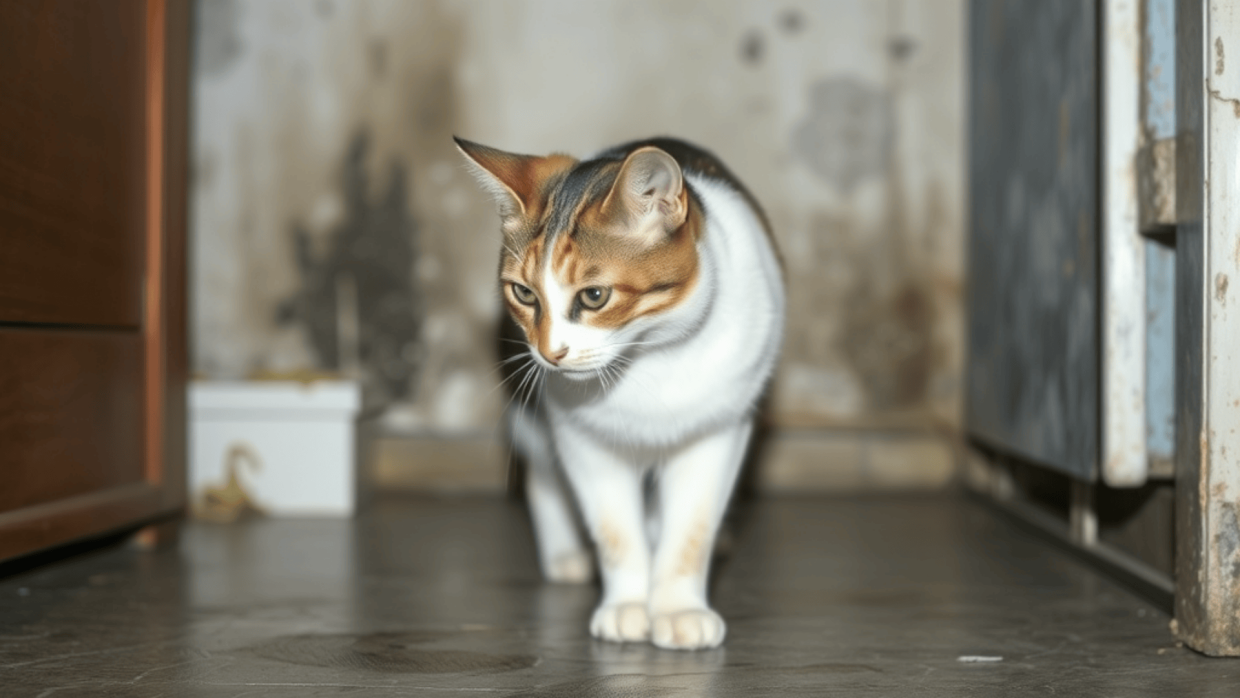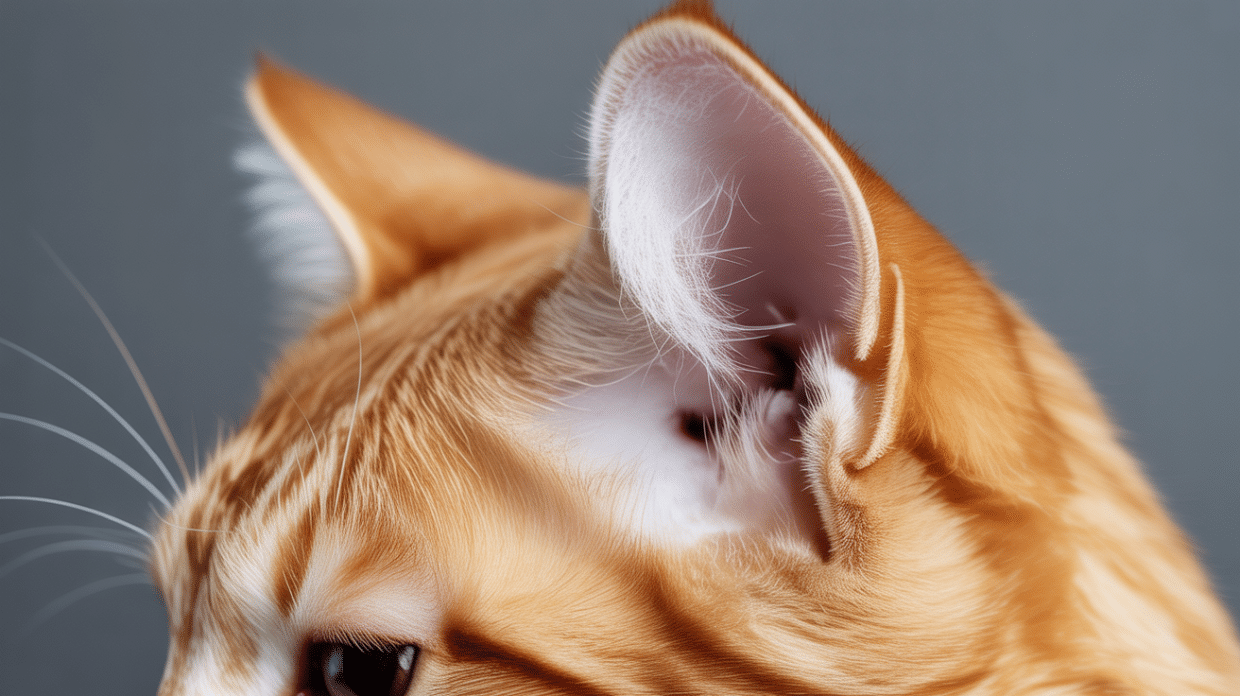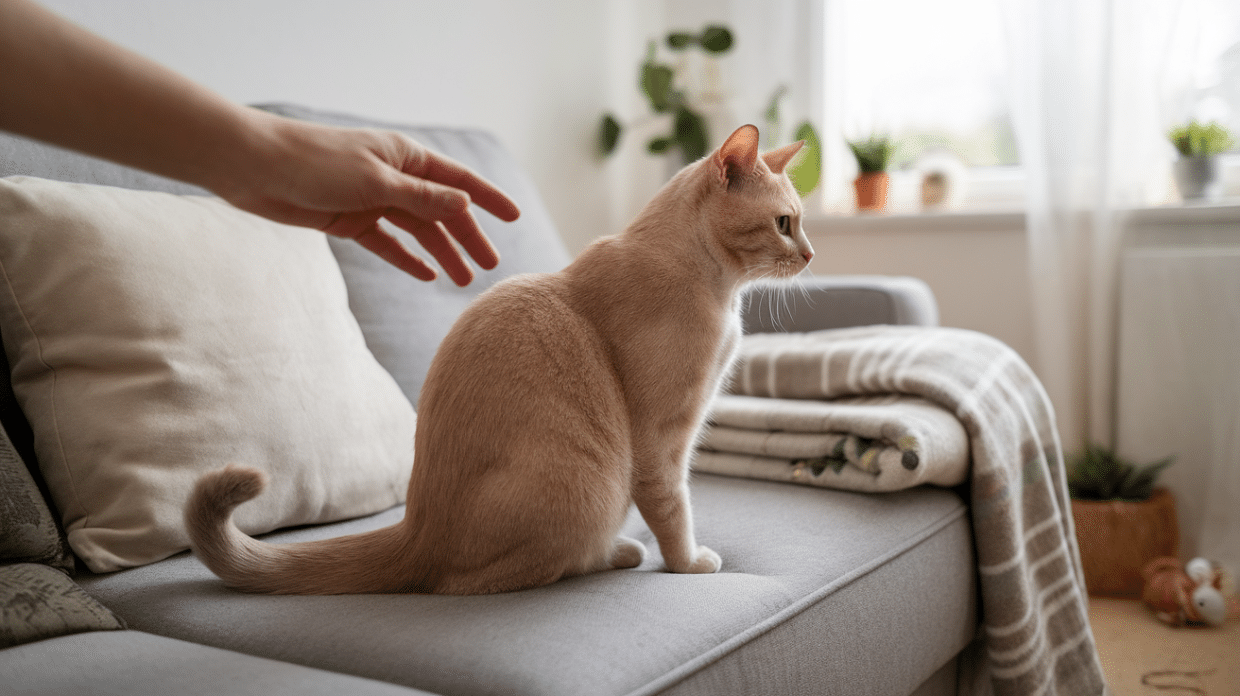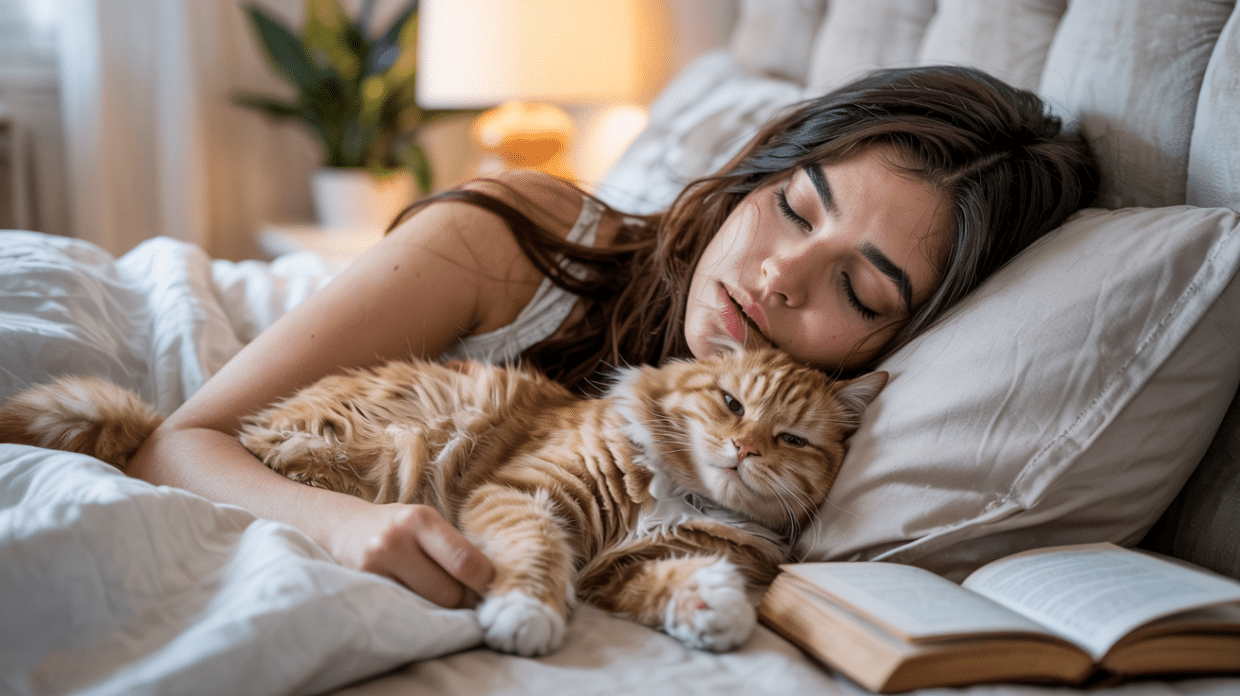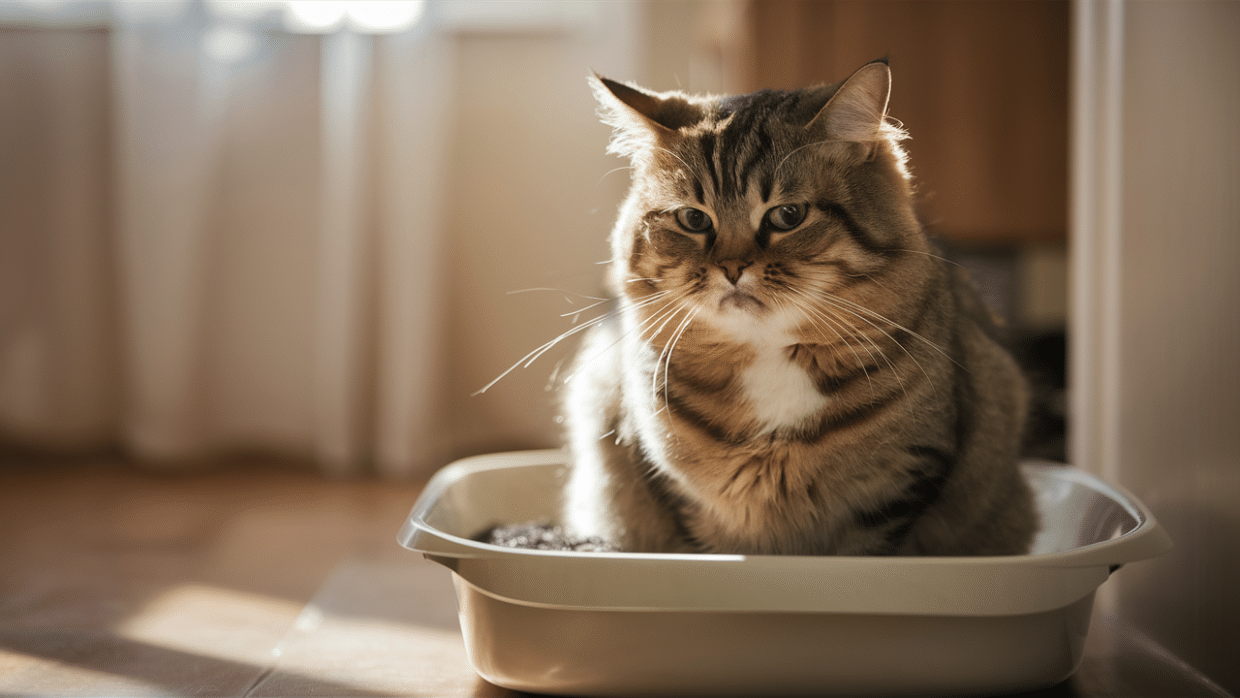Have you ever wondered if cats can smell mold? The answer is yes.
Mold can be harmful to cats, causing various health problems. Due to their small size, cats are more sensitive to mold, and even small amounts can cause sickness. Mold can affect your cat’s respiratory system, skin, and overall well-being.
In this blog, we will explain how mold impacts cats and how to identify the signs of mold sickness.
We’ll also cover effective ways to treat mold-related illnesses and prevent mold exposure in your home.
Additionally, we will discuss how proper diet, nutrition, and creating a safer environment can help support your cat’s recovery and overall health.
Can Cats Smell Mold?
While there is no direct evidence that cats consciously detect mold, their exceptional sense of smell may allow them to sense its presence.
Cats’ behavioral changes can be a clue to their awareness of mold in the environment.
Feline Sensory Abilities
Cats have a superior sense of smell, which may make them sensitive to the musty odor of mold. However, they may not react the same way humans would.
Behavioral Clues
Cats may show changes in behavior, such as sniffing specific areas or avoiding certain rooms where mold is present.
They might also urinate in spots where mold is located, confusing the scent with that of another animal’s urine.
Mold Detection in Cats’ Behavior
Since cats cannot verbally communicate their symptoms, their behavior can offer clues to mold exposure.
Sniffing Around Specific Areas: Cats may sniff areas with mold, such as damp basements or bathrooms, and might try to avoid them.
Urinating Outside the Litter Box: Mold may have a scent that cats mistake for urine, prompting them to mark the area.
Changes in Behavior: Cats may hide more often or show signs of lethargy or anxiety in response to mold exposure.
How Mold Affects Cats
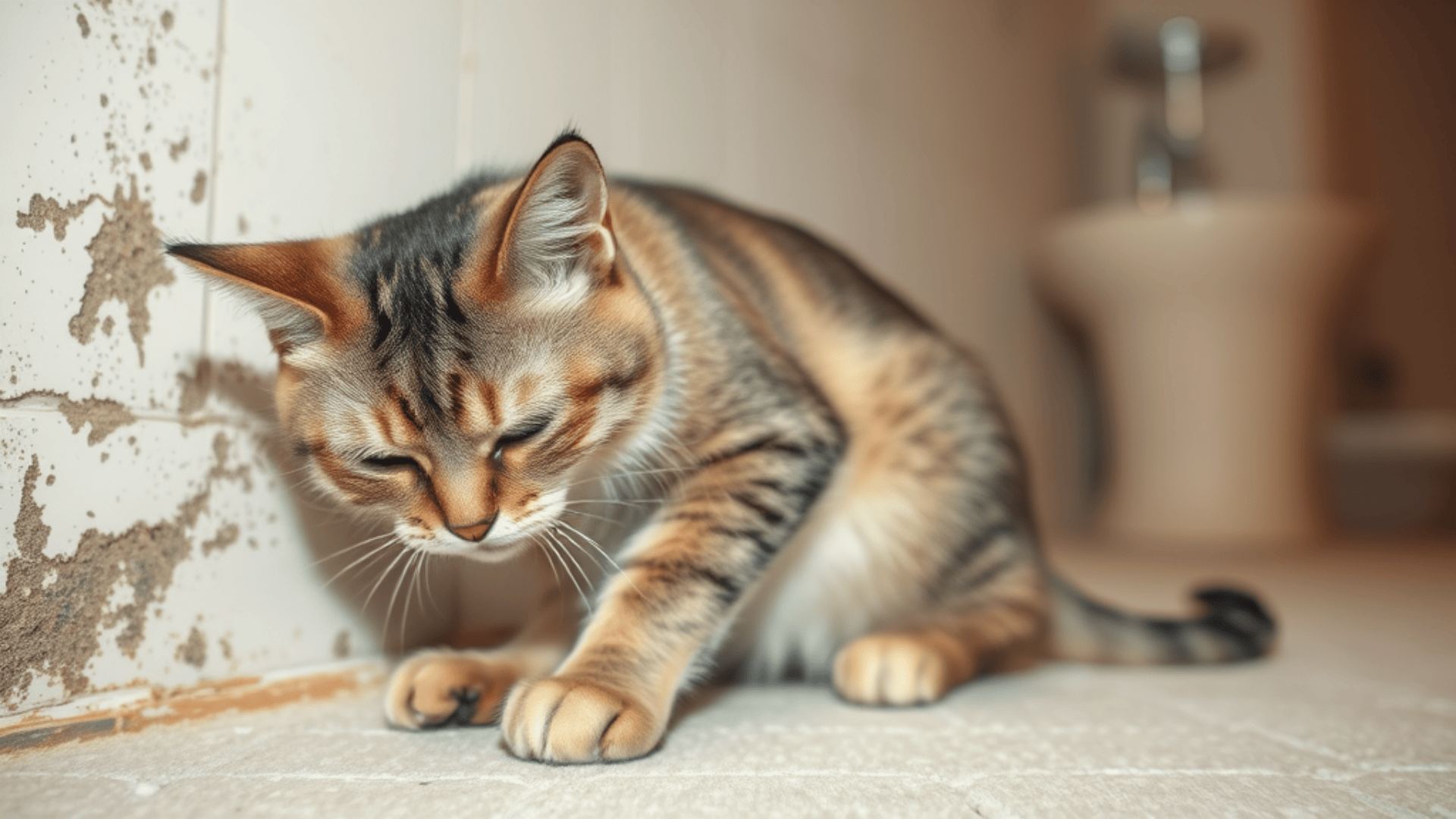
Mold exposure can lead to many health problems for cats, and their smaller size makes them more at risk.
Understanding how mold affects cats is important for preventing and treating mold-related illnesses.
Respiratory, Skin, and Gastrointestinal Symptoms
- Sneezing
- Coughing
- Wheezing
- Hair loss
- Excessive scratching
- Vomiting
- Diarrhea
- Loss of appetite
Toxic Mold (Black Mold) and Long-term Risks
Black mold can cause serious damage to internal organs, including bleeding in the lungs (pulmonary hemorrhage) and liver damage.
Long-term exposure may lead to chronic respiratory problems and other serious health issues that affect your cat’s overall well-being.
How Mold Affects Cats Differently from Humans
Understanding the differences in how mold affects cats compared to humans can help with prevention and treatment.
Size and Sensitivity
Cats are much smaller than humans, making them more vulnerable to mold exposure. Even small amounts of mold can lead to serious health issues for cats.
Instinctual Behavior
Cats are experts at hiding signs of illness, making it harder to detect mold-related sickness in the early stages.
Unlike humans, who can express discomfort, cats may only show symptoms when they are seriously unwell.
Treating Mold Sickness in Cats
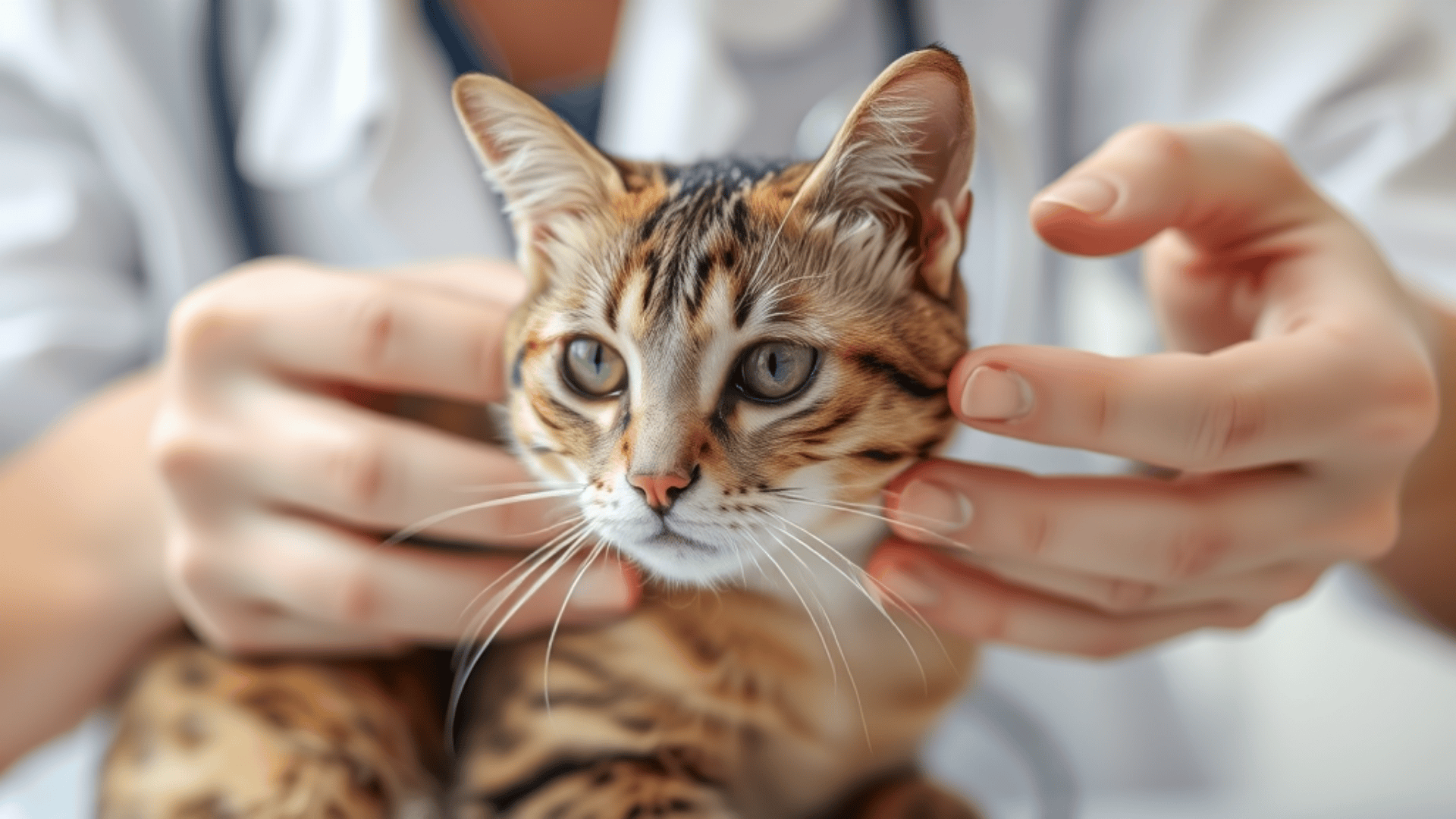
Prompt treatment is essential if you suspect your cat is suffering from mold exposure.
- Immediate Actions: Consult a vet if your cat shows signs of mold sickness, such as coughing, lethargy, or skin issues.
- Treatment Options: Based on its symptoms, your cat may need antibiotics, antifungal medications, or other treatments. Mold exposure must also be addressed in your home to prevent further health complications.
Preventing Mold Exposure for Cats
Preventing mold exposure is key to keeping your cat healthy. Here’s how you can minimize the risks.
- Dehumidifiers: Use dehumidifiers to keep humidity levels low and reduce mold growth.
- Leak Inspection: Regularly check for leaks and moisture-prone areas like basements, kitchens, and bathrooms.
- Cleaning Pet Items: To prevent mold buildup, clean your cat’s bedding, toys, and food bowls regularly.
- Proper Storage: Store pet food in sealed, moisture-free containers and keep it in dry, cool areas.
Use pet-safe cleaning products and consider professional mold removal services if mold persists in your home.
Creating a Mold-Free Environment for Cats
In addition to cleaning, other measures can help you create a safer, mold-free environment for your cat.
- Air Purifiers: Using HEPA air purifiers can help reduce mold spores in the air, improving the air quality for both humans and cats.
- Mold-Resistant Materials: Use mold-resistant paints, flooring, and materials in moisture-prone areas like bathrooms and basements. These materials can help prevent mold from growing in your home.
Diet and Nutrition for Cats Recovering from Mold Exposure

Diet and Nutrition for Cats Recovering from Mold Exposure
A healthy diet is crucial for recovery when your cat has been exposed to mold. It helps strengthen the immune system, supports detoxification, and improves overall health.
Immune-Boosting Foods
- Antioxidants: Foods like blueberries and spinach help protect cells from damage.
- Omega-3 Fatty Acids: Found in salmon or sardines, they reduce inflammation.
- Vitamins C and E: Found in pumpkin and spinach, these support immune health.
- Protein: High-quality chicken or turkey helps rebuild tissues.
Hydration and Detox
- Water-Rich Foods: Wet food or broths help keep your cat hydrated and support detox.
- Supplements: Consider milk thistle or turmeric (consult your vet first) to support liver function.
- Avoid Dry Food: Wet food helps with hydration, which is key for detox.
Foods to Avoid
- High-Carb Foods: Can increase inflammation.
- Toxic Foods: Avoid onions, garlic, and chocolate.
Always consult your vet before making diet changes or adding supplements. Proper nutrition will help your cat recover faster and stay healthy.
Conclusion
Mold can be harmful to cats, causing serious health problems. However, with early detection, proper treatment, and preventive actions, you can protect your cat from mold-related illnesses.
Keeping your home mold-free and supporting your cat’s health with a healthy diet and hydration is essential for their well-being.
If you think your cat has been exposed to mold, consult your vet for the best care.
For more tips on keeping your cat safe and healthy, be sure to check out other helpful blogs on our website!

